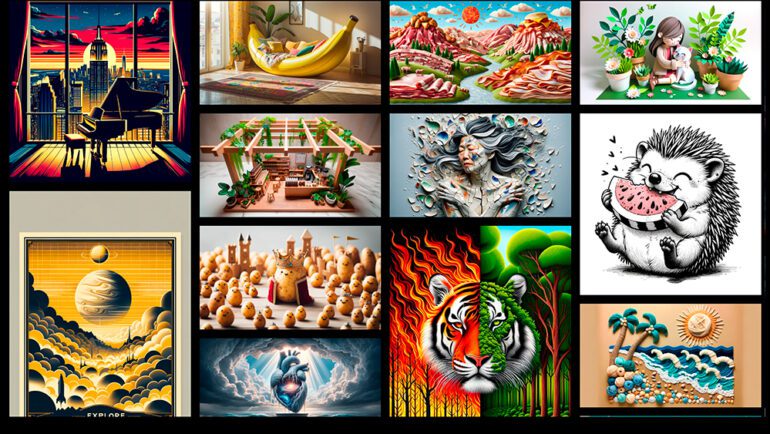TL;DR:
- OpenAI has discreetly introduced DALL-E 3, an upgrade to its AI image generator, DALL-E 2.
- It became available through Microsoft’s Image Creator tool.
- DALL-E 3 faces competition from other AI image generators like Midjourney.
- A YouTube influencer praised DALL-E 3’s capabilities, outperforming its predecessor.
- DALL-E 3 was announced with protective measures, targeting paid subscribers initially.
- Public access to DALL-E 3 via Bing Image Creator is now more widely available.
- The model’s enhanced capabilities include generating coherent text and depicting historical figures.
Main AI News:
In a swift and unexpected move, OpenAI has discreetly introduced DALL-E 3, a groundbreaking upgrade to its already acclaimed AI image generator, DALL-E 2. This technological leap has quietly found its way into the public domain through Microsoft’s Image Creator tool, an integral component of its browser-based AI suite, leaving digital art communities buzzing with excitement.
DALL-E 3, the highly anticipated successor to its predecessor, marks a significant stride in the world of generative AI. While OpenAI’s ChatGPT continues to dominate the text-based AI landscape, DALL-E faces formidable competition from rivals such as Midjourney and Stable Diffusion. A head-to-head comparison with DALL-E 2 exposed areas where the latter fell short, intensifying the anticipation for its next iteration.
Back in July, AI enthusiasts were granted a glimpse of OpenAI’s ongoing efforts to enhance DALL-E 2. YouTube influencer MattVidPro, in a captivating display, showcased DALL-E’s superior performance over its predecessor and other image generators. His enthusiastic declaration – “This blows anything we’ve seen before out of the water, it’s insane” – encapsulated the community’s reaction. Even Midjourney, a prominent contender, found itself outclassed, as MattVidPro affirmed.
However, it was not without its challenges. The technology preview lacked the robust safeguards implemented by major AI developers to curb malicious and deceptive usage. This loophole enabled MattVidPro to unveil an uncensored implementation of DALL-E, raising concerns about its potential misuse.
The official announcement of DALL-E 3 on September 20 heralded its enhanced capabilities, accompanied by stringent protective measures for the public. Initially, it seemed that privileged access would be granted to paid subscribers of OpenAI’s ChatGPT Plus and Enterprise products.
Late on a Friday evening, MattVidPro shared the exciting news that a public release of DALL-E 3 was imminent. He disclosed that some users could gain early access via Bing Image Creator by employing various tactics, such as logging in and out of Microsoft accounts, utilizing less mainstream web browsers, or clearing browser caches. However, as of now, these tactics are no longer necessary, indicating a wider availability.
“While DALL-E 3 holds tremendous potential within the ChatGPT interface, it appears that access to that feature remains limited. Nevertheless, users are undoubtedly benefiting from its capabilities through Bing Image Creator,” MattVidPro stated.
The Bing Image Creator interface discreetly conceals the version of DALL-E in use, making it challenging for users to discern. MattVidPro shared a set of test prompts to identify the new version, including its ability to generate coherent text and depict historical figures and famous personalities. Some users have speculated that other image generators may intentionally restrict their capabilities in response.
Conclusion:
DALL-E 3’s discreet release marks a significant milestone in AI image generation. With its enhanced capabilities and wider accessibility, it sets a new benchmark in the market, potentially redefining the competitive landscape for AI image generators. Businesses and creative professionals should closely monitor its impact and consider its integration into their workflows for improved image generation.

